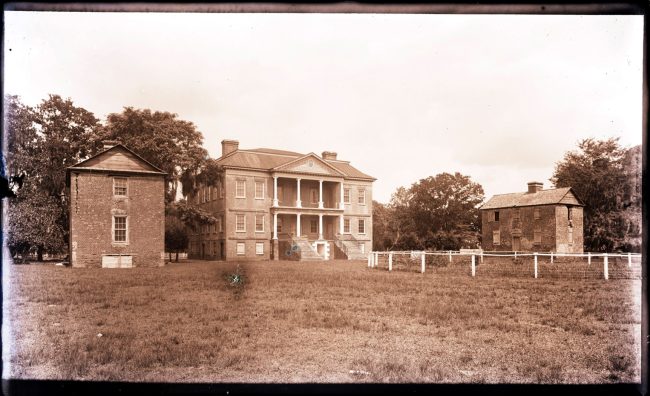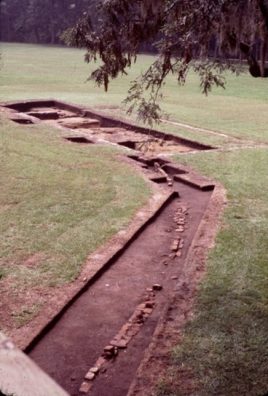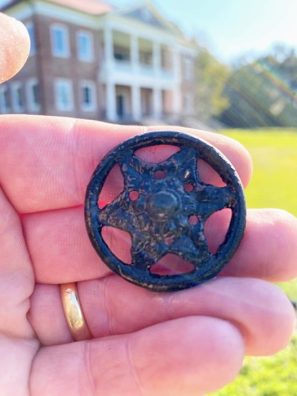Voted the Best Place to See by Condé Nast Traveler.


c. 1886 photo of Drayton Hall with existing flanker buildings.
The archaeology team returned to the north flanker building this fall season to complete excavations on this important structure which had taken place in 1981 and 2008. Increased armadillo activity around the north flanker’s masonry foundation has turned up several 18th century artifacts, and the filter fabric below the gravel surface has deteriorated, allowing grass and weeds to grow though that protective layer.
When the north flanker was first explored archaeologically in 1981, work was focused on the interior of the south side of the building – the north half was left unexcavated. What’s more, only two small test units were dug on the south side, where we suspect steps leading to the main entrance would have been – this excavation will help answer that question.

The north flanker and north colonnade excavation, 1981.
The two prior campaigns of fieldwork also revealed evidence of the pre-Drayton, European occupation of the property including a well, boundary ditch, and several undefined features. Our strategy is to re-excavate these earlier test units to fully open the entirety of the structure to arrive at a better interpretation of how the building functioned, and who may have occupied the space. We hope to be able to determine a date for the construction of the building from artifacts we may recover from the builder’s trench – this is the narrow space surrounding the brick foundation that artifacts would have been deposited as the building was going up.

Excavated curtain tie back.
Over the course of two months, our fieldwork has yielded hundreds of artifacts, like this 18th c. curtain tie back. The tie back gives us clues into how the interior of the flanker building may have been furnished, and has a great story to tell. There is a direct parallel between our excavated example and those on the interior of Dumfries House, Cumnock, UK. The tie backs at Dumfries House were designed by Thomas Chippendale (1718-1779) and show up in the purchase inventory in 1760 – which is the right period for similar furnishings to have appeared at Drayton Hall. The tie back is brass, features a floral motif, with detailing on the petals affixed to the outer ring.
While we have several more weeks of excavation planned, the artifacts will be washed in the Stephen J. Wood Conservation Lab, and we will continue to make more discoveries like this amongst the finds.
Date published: December 21, 2023